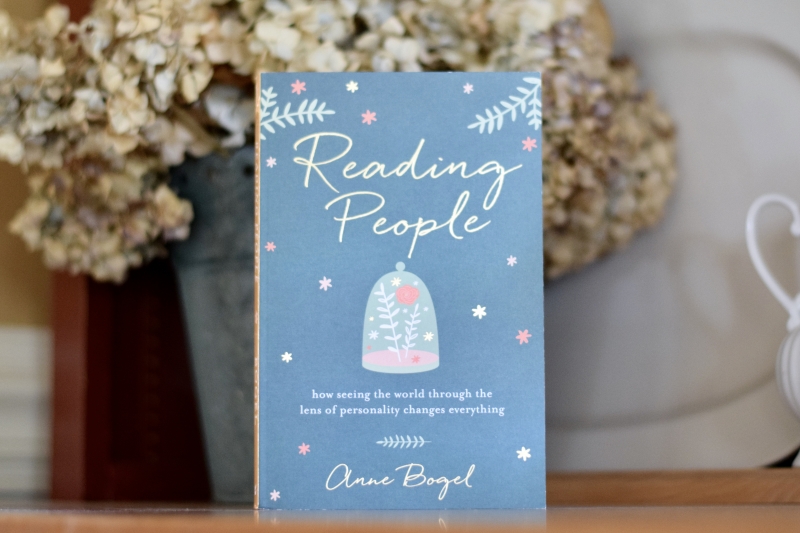Reading People: A Review – How Knowing and Serving Walk Hand-In-Hand
I have been a long-time fan of Anne Bogel. You might know her better as Modern Mrs. Darcy. Her podcast is fabulous, but I’m a devoted fan of her blog. If I’m in a reading lull or need a quick shot of reading inspiration, she’s my go-to! So when I heard she had a book coming out I knew I’d be in line! And fortunately, I got to be a part of the Reading People pre-launch team which means I got an advance copy (!!! how-cool-is-that !!!) to pre-read, review and share with you so that you’d know exactly what to expect when Anne’s book releases on September 19 (which is right around the corner)!
So. Reading people. Yep. We are.
And so…I thought, how perfect is this? And this book is a perfect fit, but not in the way I might have initially thought. Read on, my reading friends!
Yes, we do live a lifestyle that is full of books – we are “reading people.” However, Anne’s book isn’t so much about people that read, as it is about reading (the verb: seeing, knowing, understanding, taking-in) the people in your life – including yourself. At its heart: this book is about understanding (the many different) personalities as a way of seeing and better understanding the people in your life. And why that is just so important!
This book is an instant page-turner, and it’s one you’re going to enjoy and then pick up again (and again) so you can make a few notes. What is unique and worthwhile about Reading People and what makes it so essential for your reading basket is that Anne, after her years of reading and research across the topic of personalities, takes the dizzying myriad of terms and labels and descriptors and breaks them down so that they’re understandable and useful, and I need that!
I have 5 children – from adult to preschooler – so with such a varied 7 person family, there’s a pretty good chance that more than a couple of different personalities are represented here on any given day. We have introverts and extroverts here. There are highly sensitive people and highly INsensitive people here. There are guardians and artisans. Some days it can be exhausting and more than a few challenges have left me second-guessing how best to serve the people I love so dearly. And that’s probably the takeaway for me – I read this book and felt I understood all of us better. In that sense, this book gave me clarity! I saw my children on these pages and experienced so many aha! moments! I could see issues that I or my kids struggle with and better understood why. I KNEW that Rob and I communicated differently, and understood to some extent why that was, but I really fine tuned my focus after Reading People. This book isn’t about labels; it is about understanding.
The ability to apply understanding is everything with a book like this. I can read descriptions on the internet, but sometimes applying those terms and descriptors is a little more abstract. So the corresponding literary examples that accompany the personality framework descriptions are super helpful. For example, I loved the understanding of the “Guardian” and felt I could instantly apply my understanding because Anne points out that Marilla Cuthbert is an example of a “Guardian” because of her attachment to tradition, hard work, and respect for good habits. I get it. And who doesn’t see Colonel Brandon as the quiet pillar ISTJ – dependable, realistic and full of respect for duty and tradition.
Those literary examples are peppered throughout Anne’s book and overall you really begin to see yourself in some of these literary characters, which illuminates why you might have felt a connection to a particular character when you first read him/her. She is you – or at least she mirrors a dimension of your personality and you could identify with that.
If I were giving you a little “how-to-read-and-get-the-most-out-of-this-book” tutorial, here’s how it would go:
- Pre-order the book now because there are bonuses when you pre-order (a free audio version of Anne reading her book, and access to her Reading Personality class).
- Be ready to curl up around this book – and only this book – for however long it takes you to read a page-turner. Some of you can finish it in a day – for others that may be a week. You moms with lots of littles may take a little longer, but keep it tucked in your diaper bag and pull it out every time you sit down to nurse little one! Think of this read-through as your “appetizer course.” It whets your appetite.
- Now, get your favorite commonplace or reading notebook, because your next read through is going to be different. This is the “main course” portion.
- I divided my notebook into subsections which correspond to the chapters/personality frameworks (see list below). I found myself noting interesting points and indicators about myself, but also my children. I…ahem…had no idea I had a highly sensitive child. Ahem. I might have more than one actually. And I am SOOOO not-highly-sensitive. Which I think is amusing…but also challenging. Especially when it comes to serving these different kiddos through stressful situations. So. Take notes. Because you’ll want to come back and connect some dots later.
- As I was reading, I realized I wanted to highlight and color code some of my notes when they corresponded to different kids, or to myself or my husband. This helped me a lot when flipping back through my notes.

- Finally, make a booklist for further reading so you can check out some of the books Anne suggests from your library or Amazon. For example, I definitely want to read more on Kiersey’s temperaments, but I don’t want to take off on that right away, and I don’t want to forget it – so, I devoted a couple of pages at the end of my reading notebook to “further reading.”
The personality frameworks discussed in Reading People are:
- Introverts and Extroverts (ch. 2)
- Highly Sensitive People (ch. 3)
- The Five Love Languages (ch. 4) **I loved this chapter – I’m a huge fan of Gary Chapman and I read his books a long time ago thanks to being introduced to them by my mom. :)**
- Keirsey’s Temperaments (ch. 5)
- The Myers-Briggs Type Indicator (ch. 6)
- MBTI Cognitive Functions (ch. 7)
- Clifton StrengthsFinder (ch. 8)
- The Enneagram (ch. 9) **IMPORTANT NOTE** As a Catholic, I was somewhat startled to see this listed as a personality framework. It would be a grave omission on my part not to give you the troubling issues behind this tool. It pains me to point out this very serious objection to a book that otherwise is extraordinarily helpful in the realm of personality tools, so I’ll be brief and to the point. Although shrouded in mystery, the roots of the Enneagram likely originate in Sufi mysticism which is gnostic (a self-centered, heretical doctrine that proposes salvation by knowledge). Father Rohr, the expert mentioned in the chapter, is himself the leader of a dissident (not faithful to Catholic Church teaching) group which proposes heretical New Age theology. Please consider the following statement by Pope St. John Paul II which clearly warns against the use of a New Age tool such as an Enneagram – from the Vatican document which discusses dangerous New Age practices in depth, Jesus Christ: the Bearer of the Water of Life (emphasis mine):
“John Paul II warns with regard to the “return of ancient gnostic ideas under the guise of the so-called New Age: We cannot delude ourselves that this will lead toward a renewal of religion. It is only a new way of practising gnosticism – that attitude of the spirit that, in the name of a profound knowledge of God, results in distorting His Word and replacing it with purely human words. Gnosticism never completely abandoned the realm of Christianity. Instead, it has always existed side by side with Christianity, sometimes taking the shape of a philosophical movement, but more often assuming the characteristics of a religion or a para-religion in distinct, if not declared, conflict with all that is essentially Christian”.(6) An example of this can be seen in the enneagram, the nine-type tool for character analysis, which when used as a means of spiritual growth introduces an ambiguity in the doctrine and the life of the Christian faith.“
You can read further thoughts about the use of an Enneagram, its troubling implications here, but a simple search will yield several other cautions to consider. Anne mentions that an enneagram is just a tool, and so it is. I would submit to you that a thorough examen of conscience would be a much better tool for bringing your weak areas and selfish motivations into the light of God’s grace so that you may properly resolve to work on them. I also want to take the time to mention that each of the chapters in Reading People is compartmentalized and stands on its own, making it very easy to simply eschew this chapter and enjoy the great value in the rest of the book!
If you’ve ever been overwhelmed by personality quizzes and discussions before then this book offers you some hope! You know who you are – you scored Elizabeth Bennet on your personality quiz but you’re certain you’re more of an Elinor Dashwood. Pick up a copy of Reading People and find out WHY! Is there any felicity in the world superior to this?












Jennifer –
Thank you for the excellent review as well as the cautionary note. It sounds like a very good book but the heads-up is much appreciated. I had never heard of that before and now feel prepared if I do purchase the books.
Blessings,
Kelly
Thank you for the heads up about chapter 9. I REALLY wish that was not in the book . . . otherwise I would purchase it. There is something about the inclusion in the book that makes me very nervous, and actually uncomfortable. I enjoy personality typing, have a minor in psychology, am a certified MBTI instructor, and enjoy the ins-and-outs of it all. However, since becoming a Christian (after the humanistic-worldview psyc minor in college . . . and before the MBTI instruction) I do see all of it in light of the LORD. And, that chapter really messes up the book. (I did read through quite a bit of it over on amazon preview.)
So, thank you for the review, and the caution. I really had not read much on that issue (other than knowing it was “off”), and may have become interested in it, without knowing the New Age side of it; especially with the “endorsement” of the author of a Christian book in the front pages.
Thanks so much for this review! I am looking forward to being able to read the book myself! 🙂
Thank you so much for your detailed review! As a fellow ‘Anne with an e” and INFP, I have enjoyed and learned so much from Anne Bogel! I was thrilled (in general and for her) when I realized she was publishing her first book, but when I saw that she included ennegrams in it, I was disappointed. I’m not sure if I’ll purchase it, but at least I know that it is well compartmentalized, and I can read all but chapter 9.
Thank you for the book review. I am intrigued and will definitely give it consideration. I appreciate your comments regarding the enneagram. It’s good to have
prior knowledge of its inclusion in the book. It may be a deciding factor as to whether or not I purchase. And, if I do purchase, I will be prepared to avoid that chapter.